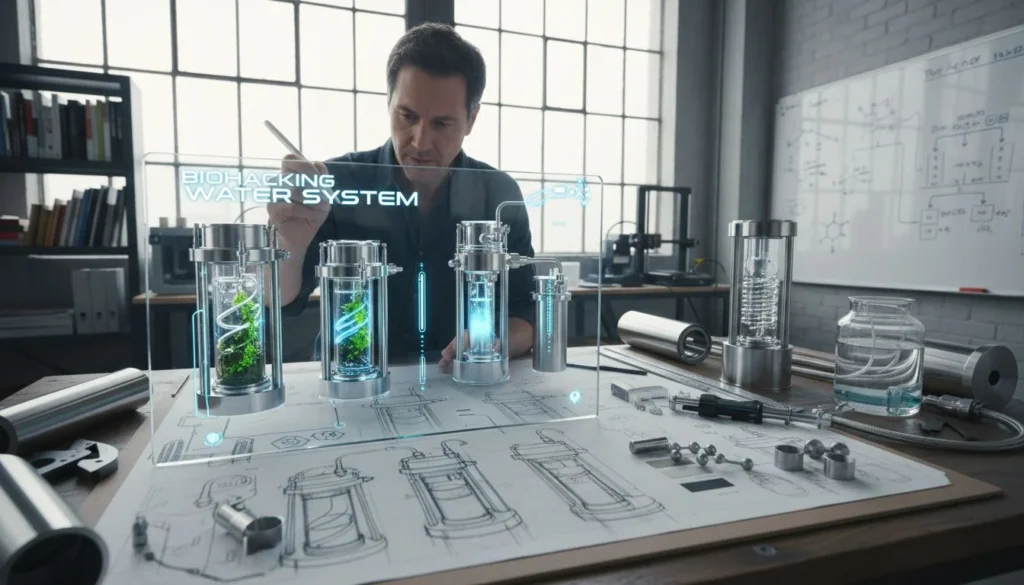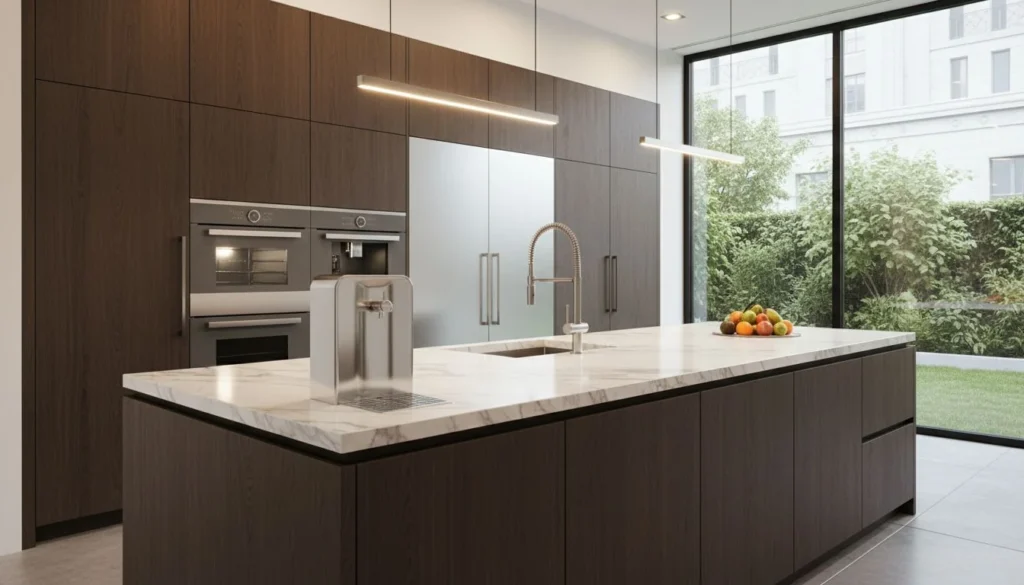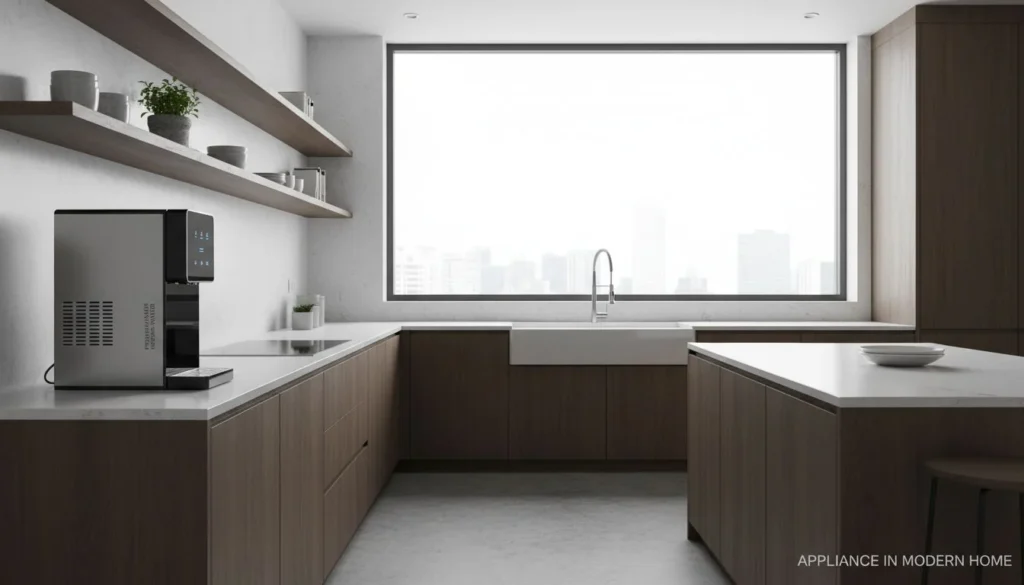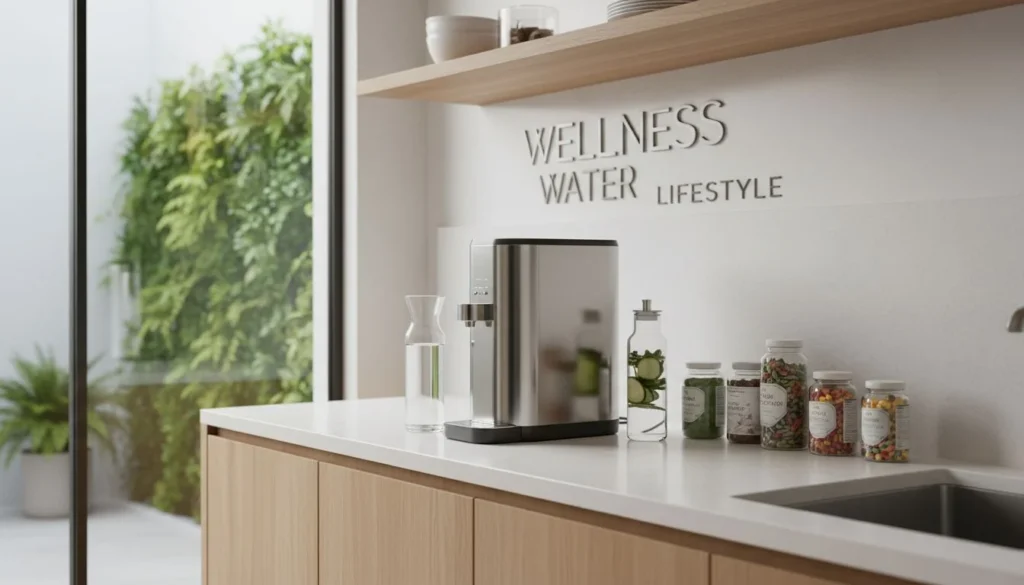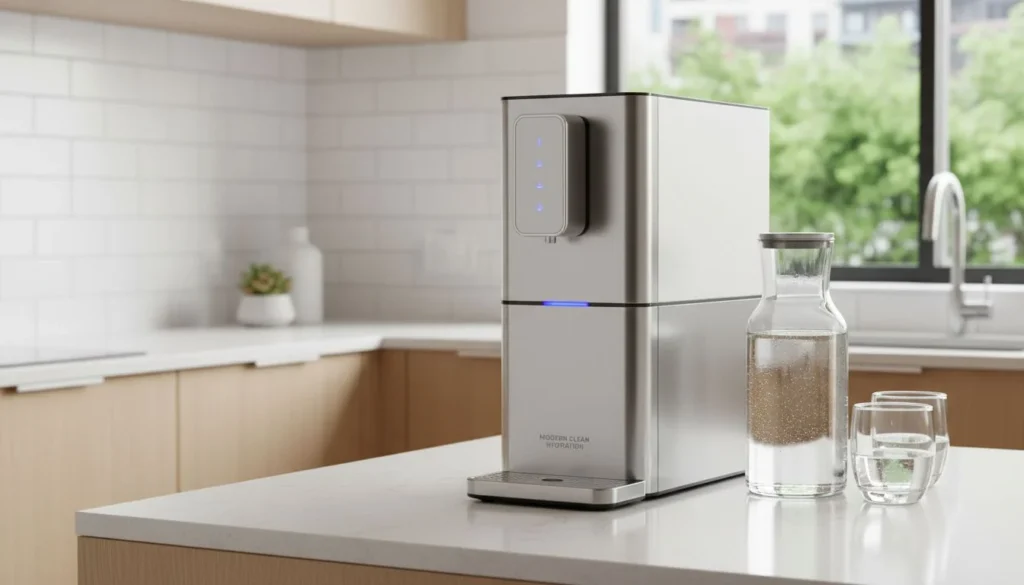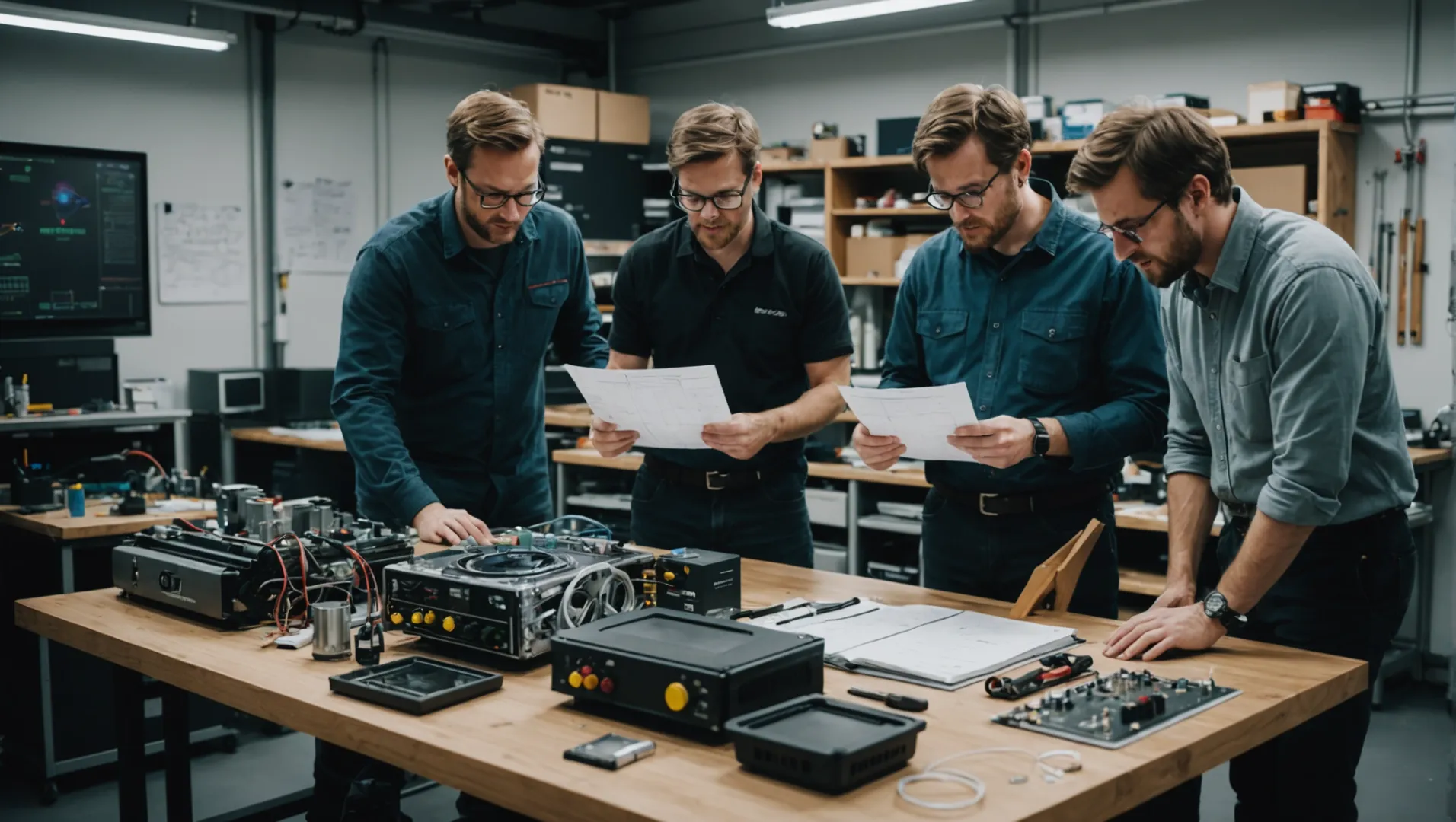
In der wettbewerbsorientierten Welt der Entwicklung von Luftreinigern gehört zur Schaffung eines erfolgreichen Produkts mehr als nur eine gute Idee.
Prototypen sind bei der Entwicklung von Luftreinigern von entscheidender Bedeutung, da sie bei der Prüfung von Leistungsmerkmalen helfen, wie z. B. CADRLuftstrom, Größe und Geräuschpegel. Sie liefern auch wertvolles Marktfeedback, helfen beim Kostenmanagement und bei der Bewertung der Fähigkeiten von Lieferanten.
Prototypen bieten zwar unmittelbare Einblicke in Leistung und Design, ihr Einfluss geht jedoch über den technischen Bereich hinaus. Das Verständnis der umfassenderen Auswirkungen von Prototypentests kann die Produktinnovation und Marktreife erheblich verbessern. Lassen Sie uns genauer untersuchen, wie Prototypen jede Facette der Entwicklung von Luftreinigern beeinflussen.
Prototypen helfen, die Entwicklungskosten für Luftreiniger zu senken.Wahr
Prototypen zeigen Möglichkeiten zur Kosteneinsparung auf, indem sie Entwürfe frühzeitig verfeinern und so die Produktionskosten senken.
Was sind die wichtigsten Leistungsmetriken, die beim Prototyping von Luftreinigern bewertet werden?
Prototypentests sind von entscheidender Bedeutung, um sicherzustellen, dass Luftreiniger hohe Leistungsstandards erfüllen.
Zu den wichtigsten Leistungsmerkmalen beim Prototyping von Luftreinigern gehören CADRLuftstrom, Größe und Geräuschpegel. Die Bewertung dieser Faktoren gewährleistet die Effizienz, Effektivität und Marktreife des Geräts.

Liefermenge an sauberer Luft (CADR)
CADR ist eine wichtige Kennzahl, die das Volumen an sauberer Luft angibt, das ein Luftreiniger pro Minute liefern kann. Sie misst die Fähigkeit des Geräts, Rauch, Pollen und Staub herauszufiltern, und liefert eine umfassende Bewertung seiner Leistung. Ein höherer CADR bedeutet eine bessere Effizienz der Luftreinigung und ist damit ein entscheidender Faktor bei der Herstellung von Prototypen.
Luftstrom
Der Luftstrom bezieht sich auf die Luftmenge, die der Luftreiniger innerhalb eines bestimmten Zeitrahmens in einem Raum umwälzen kann. Für eine optimale Leistung ist es wichtig, dass der Luftstrom der Raumgröße entspricht. Bei der Prototypenerstellung hilft die Anpassung der Luftstromparameter, ein Gleichgewicht zwischen Reinigungsgeschwindigkeit und Energieeffizienz herzustellen, was zur Gesamteffektivität des Geräts beiträgt.
Größe und Tragbarkeit
Die Abmessungen eines Luftreinigers wirken sich auf seine Benutzerfreundlichkeit und Marktattraktivität aus. Bei der Entwicklung von Prototypen ist es wichtig zu prüfen, ob die Größe den Erwartungen der Verbraucher entspricht. Ein kompaktes Design kann sich für den privaten Bereich eignen, während größere Geräte ideal für den industriellen Einsatz sein können. Ein ausgewogenes Verhältnis zwischen Größe und Leistung ist der Schlüssel zur Erfüllung der verschiedenen Verbraucherbedürfnisse.
Lärmpegel
Die Beurteilung des Geräuschpegels ist entscheidend für den Benutzerkomfort, insbesondere in Heim- und Büroumgebungen. Das Prototyping ermöglicht es Entwicklern, verschiedene Lüftergeschwindigkeiten und Designänderungen zu testen, um die Geräuschentwicklung ohne Leistungseinbußen zu minimieren. Ein niedrigerer Geräuschpegel kann die Zufriedenheit der Nutzer erhöhen und die Attraktivität des Marktes steigern.
Kosteneffizienz durch Prototyping
Prototypen dienen nicht nur der Prüfung technischer Parameter, sondern auch der Verfeinerung von Kostenstrategien. Durch das Verständnis der Stückliste1können die Hersteller die Produktionskosten ohne Qualitätseinbußen optimieren. In dieser Phase wird sichergestellt, dass sowohl Leistungskennzahlen als auch Kosteneffizienz in das endgültige Produktdesign integriert werden.
Ein höherer CADR-Wert weist auf eine bessere Luftreinigungseffizienz hin.Wahr
CADR misst das pro Minute gelieferte Volumen an sauberer Luft, je höher, desto besser.
Der Geräuschpegel wird beim Prototyping von Luftreinigern nicht berücksichtigt.Falsch
Der Geräuschpegel ist ausschlaggebend für den Benutzerkomfort, der während der Prototypentwicklung getestet wird.
Wie können Prototypen das Kostenmanagement bei der Entwicklung von Luftreinigern beeinflussen?
Prototypen spielen bei der Entwicklung von Luftreinigern eine entscheidende Rolle bei der Kostenkontrolle.
Durch die frühzeitige Erprobung von Design und Funktion tragen Prototypen dazu bei, potenzielle Kosteneinsparungsmöglichkeiten zu ermitteln, die Ressourcenzuweisung zu optimieren und die mit der Massenproduktion verbundenen finanziellen Risiken zu verringern.
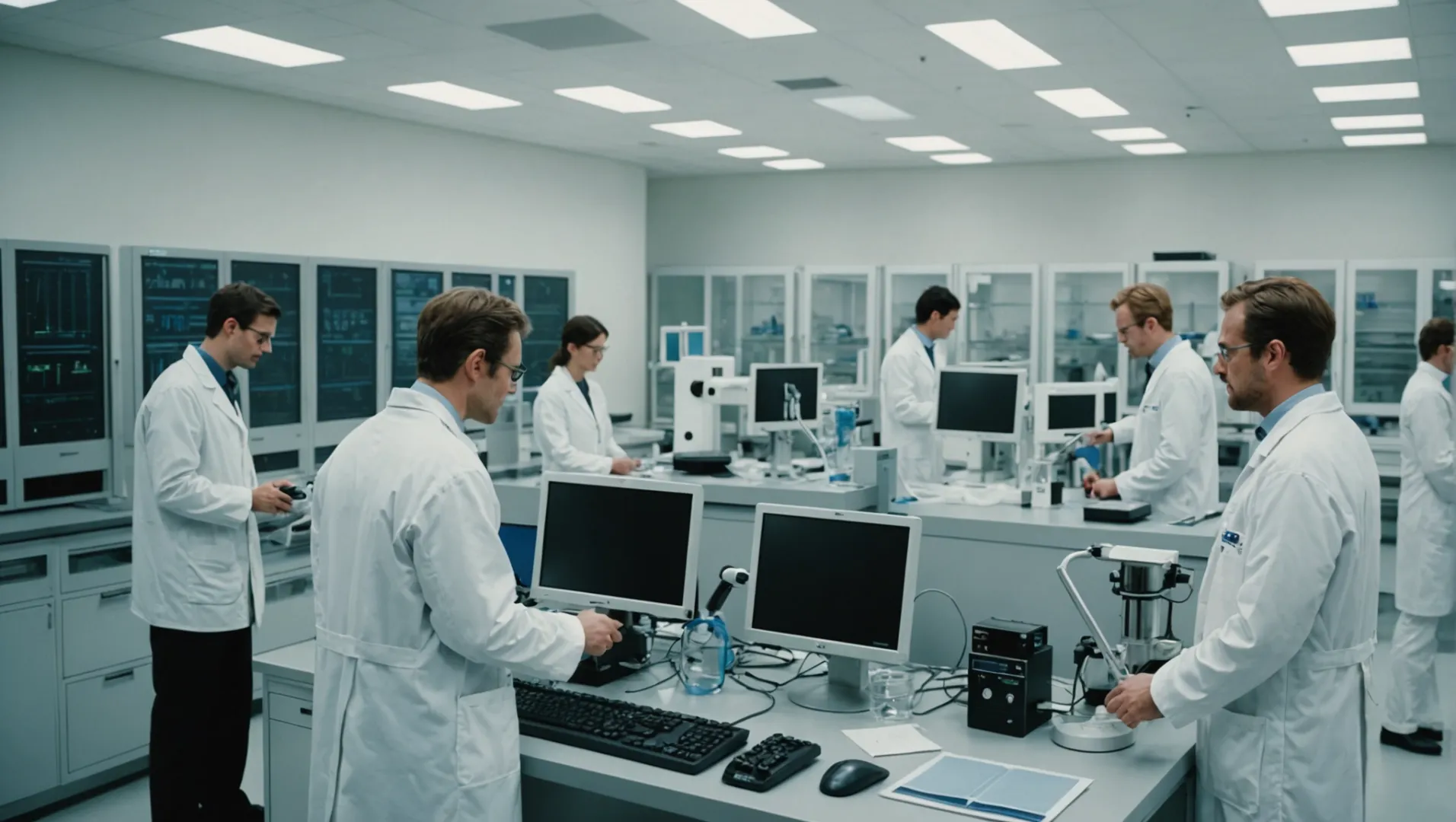
Prototypen als Werkzeug für die Kostenanalyse
Die Entwicklung eines Luftreinigers ist ein teures Unterfangen, bei dem jede Entscheidung das Gesamtbudget erheblich beeinflussen kann. Durch die Verwendung von Prototypen können die Entwickler testen und verfeinern wichtige Leistungsmetriken2 wie CADR (Clean Air Delivery Rate), Luftstrom und Geräuschpegel zu prüfen, bevor kostspielige Produktionswerkzeuge angeschafft werden. Frühzeitige Tests helfen dabei, Bereiche zu ermitteln, in denen Kosten gesenkt werden können, ohne dass die Qualität darunter leidet.
Wenn ein Prototyp beispielsweise zeigt, dass ein bestimmtes Konstruktionselement zu übermäßigem Lärm führt, können die Ingenieure mit alternativen Materialien oder strukturellen Änderungen experimentieren, um die gewünschte Leistung zu geringeren Kosten zu erzielen. Solche Erkenntnisse sind von unschätzbarem Wert für die Entwicklung eines kostengünstigeren Endprodukts.
Markt-Feedback und Kostenmanagement
Funktionsprototypen spielen auch in der anfänglichen Vermarktungsphase eine entscheidende Rolle, indem sie potenzielle Kunden anlocken. Frühzeitiges Marktfeedback hilft den Entwicklern, fundierte Entscheidungen darüber zu treffen, welche Funktionen vorrangig zu behandeln oder zu streichen sind, wodurch der Produktdesign- und Entwicklungsprozess rationalisiert wird. Diese Feedback-Schleife kann die nachfolgenden Investitionsrunden in Werkzeuge, die bei der Herstellung von Luftreinigern notorisch teuer sind, verringern.
Stellen Sie sich ein Szenario vor, in dem Kundenfeedback darauf hindeutet, dass eine bestimmte Funktion weniger wichtig ist. Die Entwickler können dann beschließen, die Ressourcen an anderer Stelle einzusetzen und so die Kostenmanagementstrategie zu optimieren.
| Vorteile des Prototyps | Auswirkungen auf die Kosten |
|---|---|
| Frühe Leistungstests | Reduzierung unvorhergesehener Kosten in der Produktion |
| Feedback vom Markt | Optimierung der Priorisierung von Funktionen |
| Bewertung der Lieferanten | Langfristige Kosteneffizienz gewährleisten |
Lieferantenbewertung durch Prototyping
Das Prototyping dient als Maßstab für die Bewertung der Zuverlässigkeit und Entwicklungsfähigkeit von Lieferanten. Wenn ein Lieferant Schwierigkeiten hat, einen Prototyp zu liefern, der den Konstruktionsspezifikationen entspricht, kann dies ein Hinweis auf mögliche Probleme bei zukünftigen Produktionsläufen sein. Die Wahl des richtigen Zulieferers ist von entscheidender Bedeutung, da ein Wechsel des Zulieferers nach der Herstellung des Prototyps erhebliche Opportunitätskosten nach sich ziehen kann.
Durch die Bewertung der Fähigkeit eines Anbieters, einen funktionsfähigen Prototyp herzustellen, können die Entwickler seine langfristige Eignung als Partner einschätzen. Diese Bewertung trägt zur Risikominderung bei und stellt sicher, dass der gewählte Lieferant die Kosten effektiv verwalten und gleichzeitig die Qualität aufrechterhalten kann.
Beschleunigung von Entwicklungszeitplänen
Ein weniger bekannter Vorteil des Prototyping ist die Möglichkeit, die gesamte Entwicklungszeit zu verkürzen, was sich natürlich auf das Kostenmanagement auswirkt. Zulieferer verwenden Funktionsprototypen häufig für Testverfahren wie CNC Bearbeitung oder UL/ETL Zertifizierung, was zu einer Zeitersparnis von mehreren Wochen bei der Produkteinführung führen kann.
Durch die Verkürzung dieser Fristen können Unternehmen ihre Produkte schneller auf den Markt bringen, wodurch sich die Betriebskosten minimieren und das Umsatzpotenzial durch frühe Verkäufe maximieren lassen. Eine Verkürzung der Entwicklungszeit um 4-8 Wochen kann beispielsweise zu erheblichen Einsparungen bei den Gemeinkosten führen und einen Wettbewerbsvorteil auf dem Markt verschaffen.
Prototypen senken die Produktionskosten für Luftreiniger.Wahr
Prototypen zeigen Möglichkeiten zur Kosteneinsparung auf und minimieren finanzielle Risiken.
Der Verzicht auf Prototypen beschleunigt die Entwicklung von Luftreinigern.Falsch
Das Prototyping beschleunigt die Zeitplanung, da die Entwürfe frühzeitig verfeinert werden.
Warum ist die Lieferantenbewertung während der Prototypentests so wichtig?
Die Bewertung von Lieferanten während der Prototypentests kann über den Erfolg Ihres Produkts entscheiden.
Die Lieferantenbewertung während der Prototypentests gewährleistet Zuverlässigkeit, Leistungsfähigkeit und Kostenmanagement und sichert den Projekterfolg.
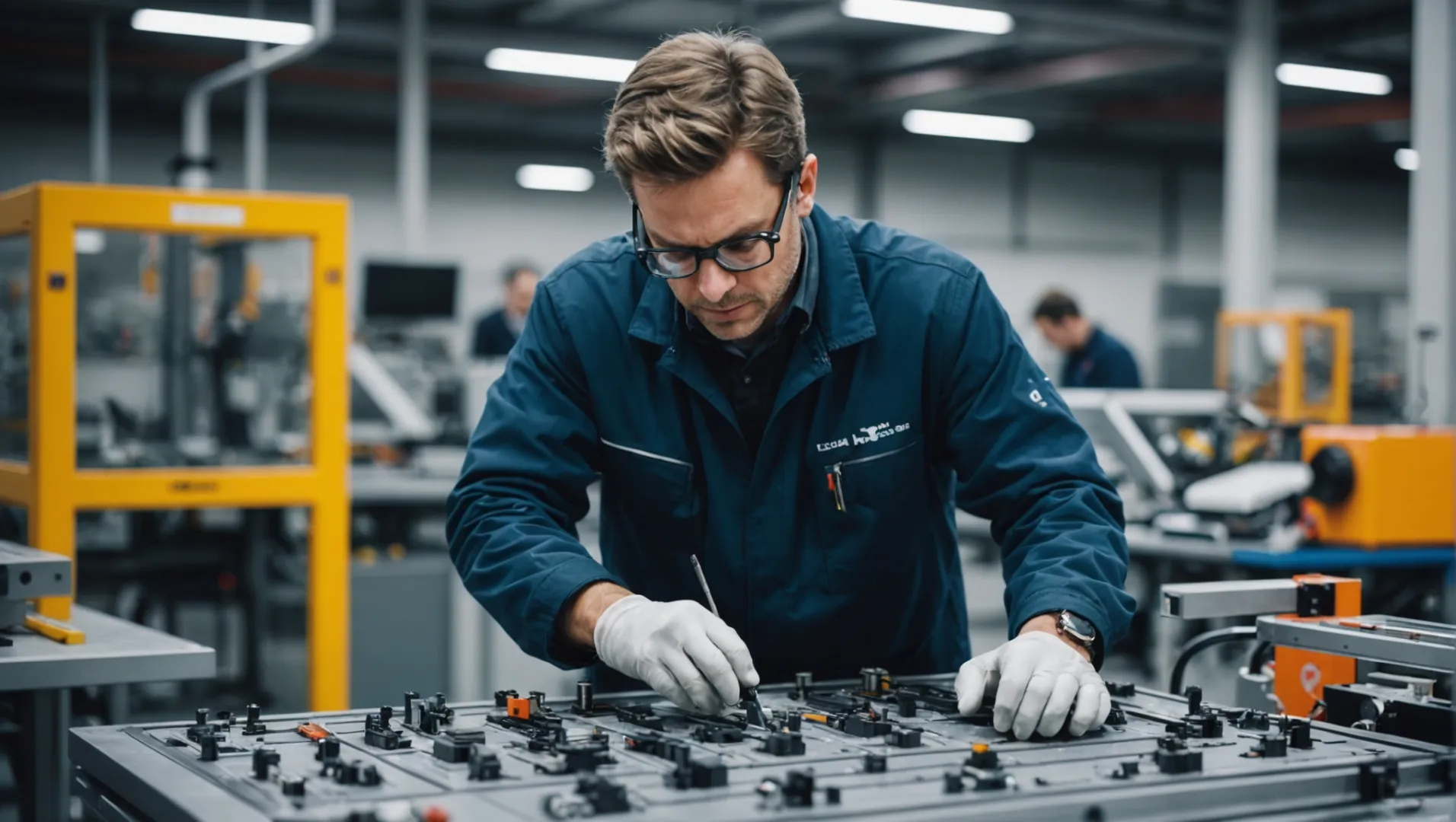
Bewertung der Zuverlässigkeit und Leistungsfähigkeit von Lieferanten
Bei der Entwicklung eines Prototyps werden die Zuverlässigkeit und die Leistungsfähigkeit eines Lieferanten auf die Probe gestellt. A Lieferantenfähigkeit3 Die Fähigkeit, komplexe und komplizierte Designs zu handhaben, ist entscheidend. Wenn ein Zulieferer Schwierigkeiten mit einem anspruchsvollen Prototyp hat, deutet dies auf mögliche Probleme bei der Unterstützung der Serienproduktion hin. Ein Wechsel des Lieferanten nach der Werkzeugherstellung kann zu erheblichen Opportunitätskosten und Projektverzögerungen führen.
Bedeutung der Kostenanalyse
Das Kostenmanagement ist ein wesentlicher Aspekt eines jeden neuen Projekts. Während der Prototypentests stellen die Lieferanten eine Materialliste (STÜCKLISTE), die für die Festlegung des Stückpreises entscheidend ist. Diese frühzeitige Kostenanalyse ermöglicht es den Unternehmen, die Kosten der Zulieferer effektiv zu verwalten und sicherzustellen, dass das Produkt die Preisziele des Einzelhandels erfüllt und auf dem Markt wettbewerbsfähig bleibt.
| Aspekt | Überlegungen |
|---|---|
| STÜCKLISTE Genauigkeit | Sicherstellen, dass der Lieferant detaillierte Stücklisten bereitstellt |
| Preisziel für den Einzelhandel | Ausrichten STÜCKLISTE Kosten mit Preisstrategien für den Einzelhandel |
Beschleunigung von Entwicklungszeitplänen
Ein kompetenter Lieferant kann den Entwicklungsprozess beschleunigen, indem er Funktionstests durchführt und CNC Prototypen für Zertifizierungen wie UL oder ETL. Dadurch kann die Zeitspanne um 4-8 Wochen verkürzt werden, was auf schnelllebigen Märkten einen Wettbewerbsvorteil darstellt. Daher ist die Auswahl eines Lieferanten, der diese Prozesse effizient unterstützen kann, für einen schnellen Markteintritt entscheidend.
Langfristiges Partnerschaftspotenzial
Bei der Erprobung von Prototypen geht es nicht nur um die unmittelbaren Projekterfordernisse, sondern auch darum, zu beurteilen, ob ein Lieferant ein langfristiger Partner sein kann. Konsistente Leistung, Flexibilität im Umgang mit unvorhergesehenen Herausforderungen und transparente Kommunikation während der Prototypphasen spiegeln das Potenzial eines Lieferanten für eine langfristige Zusammenarbeit wider.
Zusammenfassend lässt sich sagen, dass die Bewertung der Zulieferer während der Prototypentests entscheidend dazu beiträgt, dass der Produktentwicklungsprozess reibungslos, kosteneffizient und zeitnah abläuft und damit die Voraussetzungen für künftige Partnerschaften und Markterfolge geschaffen werden.
Der Wechsel des Lieferanten nach der Umrüstung erhöht die Opportunitätskosten.Wahr
Ein Wechsel des Lieferanten nach der Werkzeugherstellung kann Projekte verzögern und zusätzliche Kosten verursachen.
Die Genauigkeit der Stücklisten ist für die Preisstrategien des Einzelhandels irrelevant.Falsch
Genaue Stücklisten sind unerlässlich, um die Kosten mit den Preisen im Einzelhandel in Einklang zu bringen.
Wie beschleunigt das Testen von Prototypen die Markteinführung von Luftreinigern?
Prototypentests sind von entscheidender Bedeutung für die Verkürzung der Markteinführungszeit von Luftreinigern, da Design und Funktion frühzeitig optimiert werden können.
Prototypentests beschleunigen die Markteinführung von Luftreinigern, indem sie das Design verfeinern, die Leistung validieren und frühes Marktfeedback einholen, was zeitaufwändige Überarbeitungen reduziert.
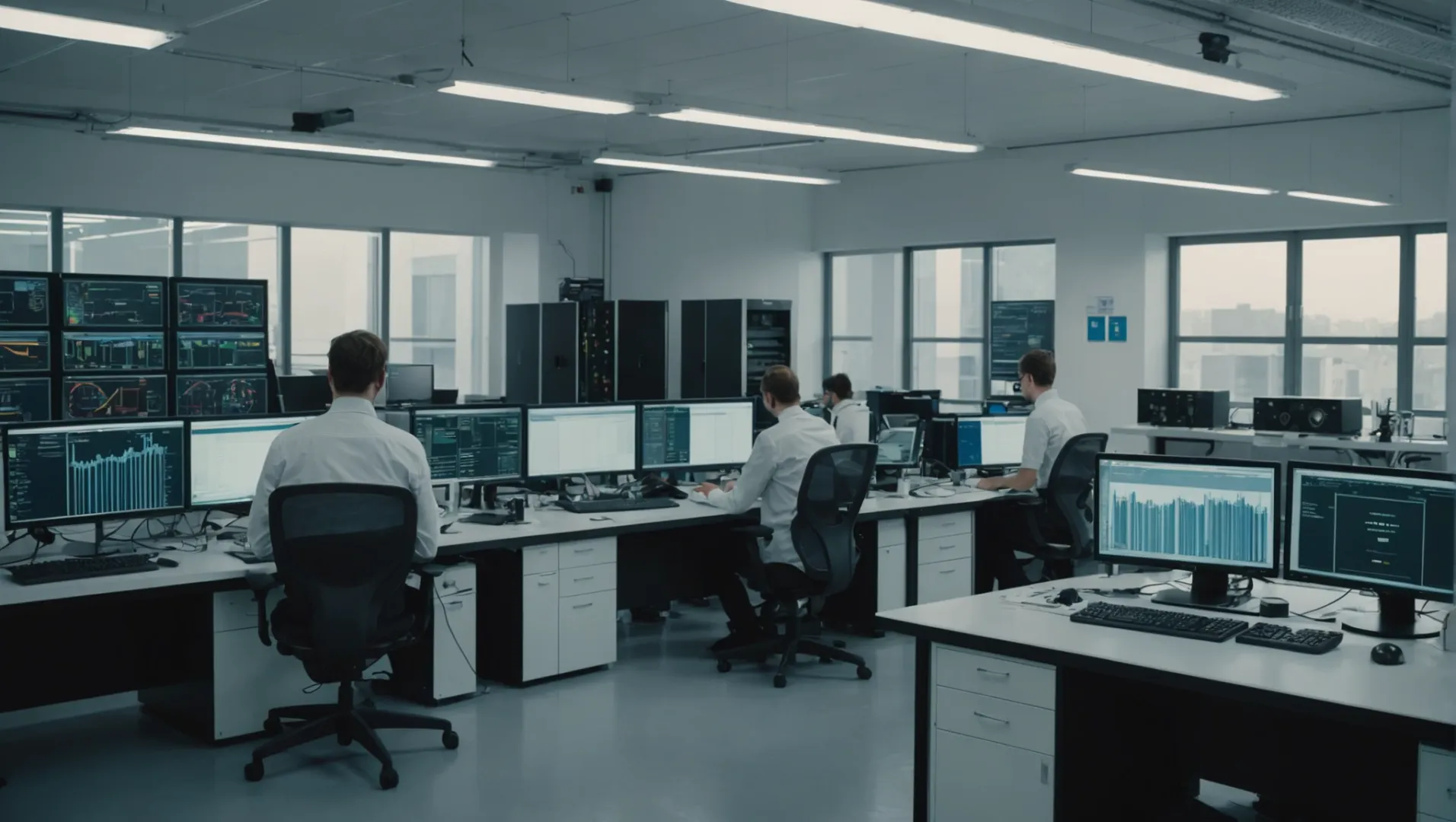
Verfeinerung von Design und Funktionalität
Eine der wichtigsten Möglichkeiten, die Markteinführung von Prototypen zu beschleunigen, besteht darin, den Teams die Möglichkeit zu geben, Konstruktionsfehler zu erkennen und zu beheben, bevor sie in Serie gehen. Durch das Untersuchen entscheidende Leistungskennzahlen4 wie zum Beispiel Clean Air Delivery Rate (CADR), des Luftstroms und des Geräuschpegels können die Entwickler bereits in einem frühen Stadium des Prozesses die notwendigen Anpassungen vornehmen. Dieser proaktive Ansatz verhindert kostspielige Umgestaltungen zu einem späteren Zeitpunkt.
Frühzeitiges Marktfeedback einholen
Funktionsprototypen sind ein wertvolles Instrument, um ein erstes Feedback vom Markt zu erhalten. Unternehmen können diese Prototypen Startkunden vorstellen, um deren Reaktionen zu bewerten. Diese Strategie hilft nicht nur dabei, die Bedürfnisse der Verbraucher zu verstehen, sondern liefert auch Erkenntnisse, die für die Verfeinerung von Marketingstrategien unerlässlich sind.
Rationalisierung des Kostenmanagements
Die Erstellung eines Prototyps ermöglicht den Herstellern die Entwicklung einer Stückliste (STÜCKLISTE), die für die Kostenanalyse entscheidend ist. Dieser Schritt hilft bei der Festlegung eines realistischen Einzelhandelspreises, der sich an den Preisen der Wettbewerber orientiert und gleichzeitig die Rentabilität gewährleistet. Zusätzlich wird durch die Verwendung eines Funktionsprototyp5können Unternehmen fundierte Entscheidungen über Investitionen in Werkzeuge treffen, die bei Luftreinigern in der Regel hoch sind.
Bewertung der Lieferantenzuverlässigkeit
Prototypentests können bei der Beurteilung der Fähigkeiten potenzieller Zulieferer hilfreich sein. Wenn ein Lieferant Schwierigkeiten hat, einen qualitativ hochwertigen Prototyp zu liefern, kann dies ein Hinweis auf mögliche Probleme bei der Massenproduktion sein, was Unternehmen dazu veranlasst, die Wahl ihres Lieferanten zu überdenken. Dieser Bewertungsprozess mindert die mit der Zuverlässigkeit der Lieferanten verbundenen Risiken.
Beschleunigung der Zertifizierungsprozesse
Prototypen können für vorläufige Zertifizierungstests verwendet werden, wie zum Beispiel UL oder ETL Tests, die dazu beitragen, Konformitätsprobleme frühzeitig zu erkennen. Durch diese Praxis können Wochen in der Gesamtentwicklungszeit eingespart und eine schnellere Markteinführung gewährleistet werden.
Durch die Nutzung dieser Strategien verkürzen Prototypentests den Weg vom Konzept zur Produkteinführung und verbessern die Wettbewerbsfähigkeit von Luftreinigern auf dem Markt.
Prototypentests verringern die Kosten für die Neuentwicklung von Luftreinigern.Wahr
Die frühzeitige Erkennung von Konstruktionsfehlern verhindert spätere kostspielige Überarbeitungen.
Prototypen von Luftreinigern können nicht für Zertifizierungstests verwendet werden.Falsch
Prototypen werden für vorläufige Zertifizierungstests verwendet, um Zeit zu sparen.
Schlussfolgerung
Prototypen sind unverzichtbar für den Erfolg von Luftreinigern, da sie das Design und die Funktionalität verfeinern, den Markteintritt erleichtern und die Kosten optimieren. Nutzen Sie das Prototyping, um Ihre Produktentwicklungsstrategie zu verbessern und sich einen Wettbewerbsvorteil zu sichern.
-
Verstehen Sie, wie sich die Stückliste auf die Kosteneffizienz bei der Produktentwicklung auswirkt: Eine Stückliste ist eine umfassende Liste von Rohstoffen, Komponenten und Anweisungen, die für die Konstruktion, Herstellung oder Reparatur eines Produkts oder einer Dienstleistung erforderlich sind. ↩
-
Erfahren Sie mehr über wichtige Kennzahlen, die bei der Entwicklung von Luftreinigern eine Rolle spielen: Unser Prototyp ermöglicht es, die Luftqualität sowie die relevanten Key Performance Indicators (KPIs) in aufbereiteter Form anzuzeigen. Mit den richtigen KPIs ... ↩
-
Erfahren Sie, wie Sie die Fähigkeiten Ihres Lieferanten effektiv bewerten können..: Achten Sie genau auf Qualität, Kapazität, Risiken, Kosten und Preisgestaltung - die fünf Schlüsselfaktoren, die Sie bei der Bewertung neuer oder bestehender Lieferanten berücksichtigen sollten. ↩
-
Entdecken Sie, welche Kennzahlen für die Bewertung von Prototypen entscheidend sind..: Die Wirksamkeit eines Luftreinigers hängt von drei wichtigen Leistungsindikatoren ab: Filtereffizienz, Luftdurchsatz und Luftstrommuster. ↩
-
Erfahren Sie, warum Funktionsprototypen für eine kosteneffiziente Produktion unerlässlich sind..: Funktionsprototypen können dazu beitragen, Risiken frühzeitig im Entwicklungsprozess zu erkennen und zu mindern, wodurch die Wahrscheinlichkeit kostspieliger Fehler oder ... ↩


